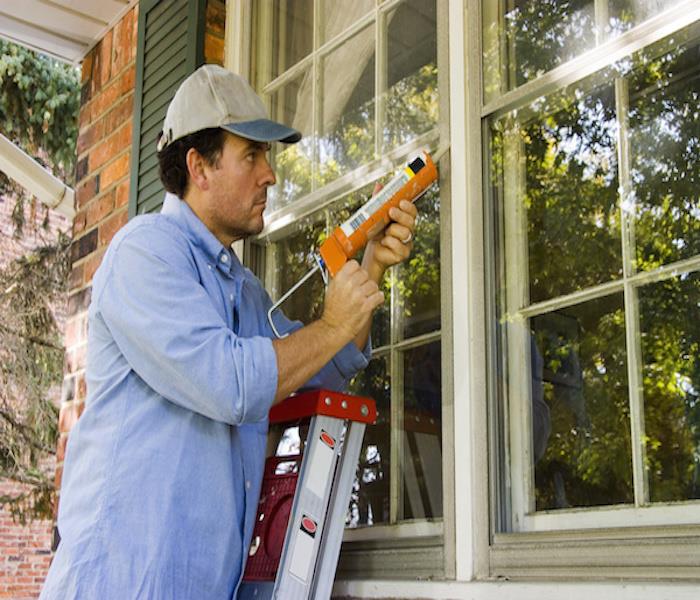Preventing Water Damage in Vulnerables Parts of Home
9/26/2016 (Permalink)
Water damage is a problem that all homeowners fear. Whether it is from a gentle rain or a torrential downpour, the littlest of water damage can put a significant dent in your bank account. Water has several ways of entering your home. Be it from insufficient insulation in the roof or some other entrance around the home, water can easily sneak in and collect. Sometimes it can get into the home without the occupants noticing. The next thing you know, it’s too late and you have thousands of dollars worth of damage to your home.
The damage to your home is not just financial either. Water damage worsens very quickly and causes other problems that can affect other aspects of your life. If in the proper environment, as water damage typically is, mold has the ability to grow. Sometimes this mold grows inside walls where it cannot be seen by the occupants. This can cause health issues for occupants of the home which include respiratory problems, allergies, among other illnesses.
While water damage can be very hard to notice until it is too late, especially by someone that does not know the tell-tale signs, there are steps that you can take to avoid water damage, or at least limit the amount of water damage. Here are some tips to help you avoid potential water damage in your home.
Wrapping Potential Water Entrances
There are several potential entrances for water around your home. Be it from the roof, window, door, or some other spot of the house, these entrances could make your home vulnerable to water damage during the next storm. A way to avoid such problems is housewrap. You may have noticed housewrap covering houses during construction. The reason for the invention of housewrap was to keep water out of the crevices of the home. Typically, housewrap does exactly as its name implies, it wraps all the way around the home, keeping it safe from potential water intrusion. The areas you would expect to be vulnerable to water intrusion, windows, utility penetrations, and intersecting roofs should be given special consideration.
Seal Your Windows
As parts of the house that are designed to open, windows are particularly vulnerable to allowing water into the home. Obviously, windows can’t be completely sealed like many parts of the house because they need to be able to open. That is, if they want to be used the way they were designed. But, by ensuring that your windows have the proper flashing and sealants layered on the window, you shouldn’t have a problem keeping water out of the house.
Utility Exposures
Houses often have areas that can be exposed to the outside elements due to utilities. This could include a hose bib, dryer vent, or some other fixture that allows the house to be exposed to outside elements. It is situations like this where flashing has its biggest impact on your home. Just like with windows and doors, flashing will ensure that these utility necessities keep the house protected from any potential water damage while still allowing the utility what is needed to serve its purpose.
Where the Wall Meets the Roof
The most vulnerable areas of a house to water damage is where two different materials meet. When the home is being built, contractors put protections in place to ensure that these parts of the house are protected from potential water damage. But, over time, the elements can wear down those protections so it is a good idea to keep a sharp eye on those parts of the house. As rain water hits the roof and slides down the house, no part of the house is more vulnerable to water damage as where the wall meets the roof. Making things even more potentially troublesome is that if water were to get into a crease in that part of the house, the water could travel down the wall and create significant damage before the occupants of the house were even aware of the initial damage.
No matter how you attempt to protect it, certain parts of your home are going to be vulnerable to water damage. Even though the amount of water might be small, depending on where the water ends up, the damage could be extensive in the price to restore. These tips will help should you find yourself in such a situation. If you have water damage and are in need of restoration, call the professionals at SERVPRO.

 24/7 Emergency Service
24/7 Emergency Service
